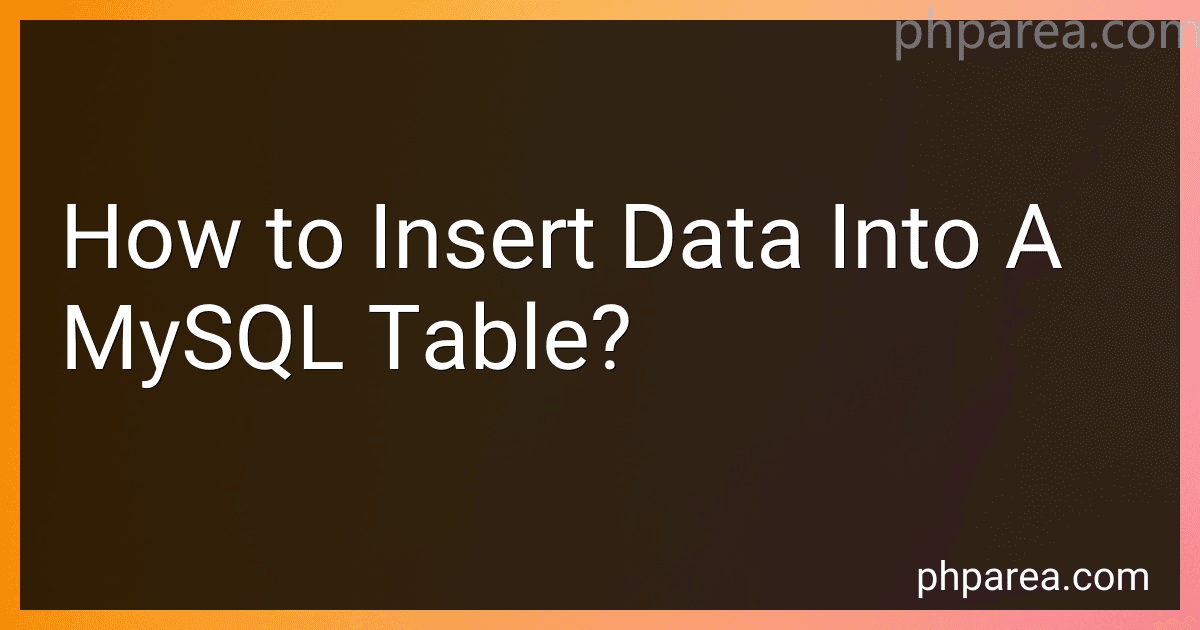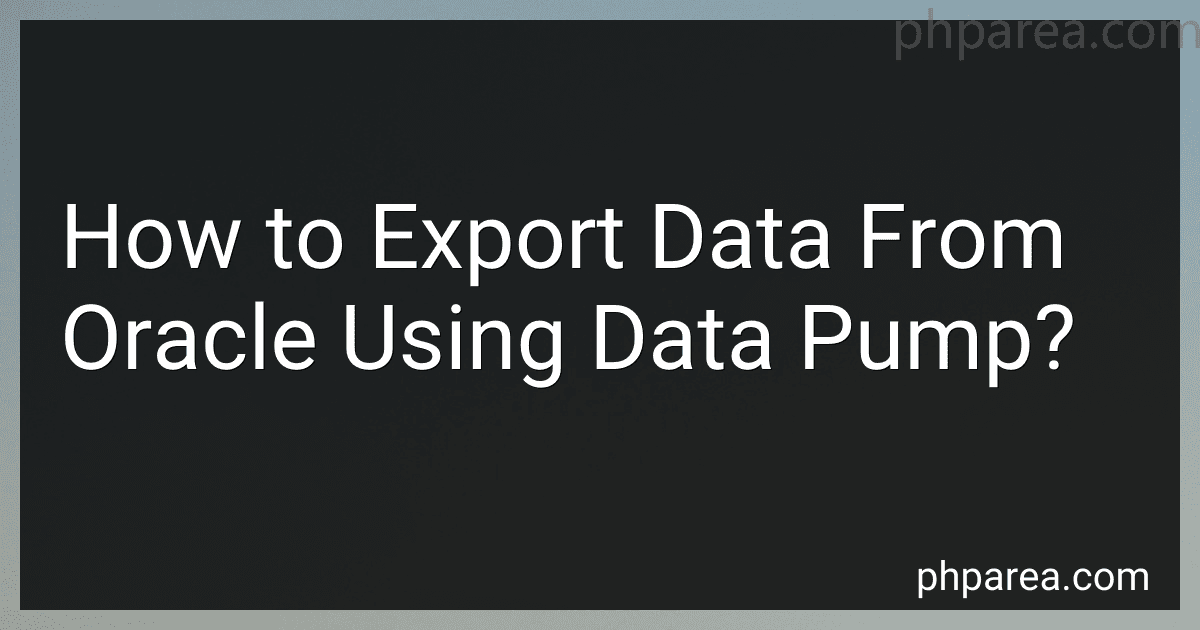Posts (page 119)
-
 4 min readTo delete records from a MySQL table, you can use the DELETE statement. The DELETE statement allows you to remove one or more rows from a table based on certain conditions.The basic syntax for deleting records is as follows:DELETE FROM table_name WHERE condition;Here, "table_name" refers to the name of the table from which you want to delete records. The "WHERE" clause is used to specify the condition that determines which rows should be deleted.
4 min readTo delete records from a MySQL table, you can use the DELETE statement. The DELETE statement allows you to remove one or more rows from a table based on certain conditions.The basic syntax for deleting records is as follows:DELETE FROM table_name WHERE condition;Here, "table_name" refers to the name of the table from which you want to delete records. The "WHERE" clause is used to specify the condition that determines which rows should be deleted.
-
 6 min readTo run a PL/SQL script in Oracle, you can follow these steps:Open the SQL*Plus application by typing "sqlplus" in the command prompt or terminal. Connect to Oracle by providing your username, password, and database details. For example: SQL> CONNECT username/password@database Once you are connected, you need to set the SQL*Plus environment settings to enable the display of output and error messages.
6 min readTo run a PL/SQL script in Oracle, you can follow these steps:Open the SQL*Plus application by typing "sqlplus" in the command prompt or terminal. Connect to Oracle by providing your username, password, and database details. For example: SQL> CONNECT username/password@database Once you are connected, you need to set the SQL*Plus environment settings to enable the display of output and error messages.
-
 9 min readTo update records in a MySQL table, you can use the UPDATE statement. The syntax for updating records is as follows: UPDATE table_name SET column1 = value1, column2 = value2, ... WHERE condition; Here is a breakdown of the different parts of the statement:UPDATE: This keyword is used to specify that you want to update records in the table.table_name: The name of the table you want to update.SET: This keyword is used to specify the columns you want to update and their new values.
9 min readTo update records in a MySQL table, you can use the UPDATE statement. The syntax for updating records is as follows: UPDATE table_name SET column1 = value1, column2 = value2, ... WHERE condition; Here is a breakdown of the different parts of the statement:UPDATE: This keyword is used to specify that you want to update records in the table.table_name: The name of the table you want to update.SET: This keyword is used to specify the columns you want to update and their new values.
-
 9 min readTo insert data into a MySQL table, you can use the INSERT INTO statement. Here is an example of the syntax:INSERT INTO table_name (column1, column2, column3, ...) VALUES (value1, value2, value3, ...);Here, table_name is the name of the table in which you want to insert the data. column1, column2, column3, etc. represent the column names of the table where you want to insert data. value1, value2, value3, etc. are the corresponding values that you want to insert into those columns.
9 min readTo insert data into a MySQL table, you can use the INSERT INTO statement. Here is an example of the syntax:INSERT INTO table_name (column1, column2, column3, ...) VALUES (value1, value2, value3, ...);Here, table_name is the name of the table in which you want to insert the data. column1, column2, column3, etc. represent the column names of the table where you want to insert data. value1, value2, value3, etc. are the corresponding values that you want to insert into those columns.
-
 5 min readTo export data from Oracle using Data Pump, you can use the following steps:Connect as a user with the necessary privileges to perform the export operation.Open a command prompt or terminal window.Use the 'expdp' command to initiate the export operation. The basic syntax of the command is: expdp [username]/[password]@[database_alias] DIRECTORY=[directory_name] DUMPFILE=[dumpfile_name] Replace the placeholders with appropriate values.
5 min readTo export data from Oracle using Data Pump, you can use the following steps:Connect as a user with the necessary privileges to perform the export operation.Open a command prompt or terminal window.Use the 'expdp' command to initiate the export operation. The basic syntax of the command is: expdp [username]/[password]@[database_alias] DIRECTORY=[directory_name] DUMPFILE=[dumpfile_name] Replace the placeholders with appropriate values.
-
 6 min readTo create a table in MySQL, you need to use the CREATE TABLE statement. The basic syntax for creating a table is as follows:CREATE TABLE table_name ( column1 datatype constraints, column2 datatype constraints, column3 datatype constraints, ... );Here, "table_name" should be the name you want to give to your table. Within the parentheses, you specify the columns of the table. Each column is defined with a name, data type, and optional constraints.
6 min readTo create a table in MySQL, you need to use the CREATE TABLE statement. The basic syntax for creating a table is as follows:CREATE TABLE table_name ( column1 datatype constraints, column2 datatype constraints, column3 datatype constraints, ... );Here, "table_name" should be the name you want to give to your table. Within the parentheses, you specify the columns of the table. Each column is defined with a name, data type, and optional constraints.
-
 9 min readTo import data into Oracle using SQL*Loader, you can follow these steps:Create a control file: Start by creating a control file that specifies the details of the data load, such as the name and location of the input file, data format, and mappings to the database table columns. Prepare the data file: Ensure that the data file you want to import is formatted correctly and matches the specifications mentioned in the control file.
9 min readTo import data into Oracle using SQL*Loader, you can follow these steps:Create a control file: Start by creating a control file that specifies the details of the data load, such as the name and location of the input file, data format, and mappings to the database table columns. Prepare the data file: Ensure that the data file you want to import is formatted correctly and matches the specifications mentioned in the control file.
-
 4 min readTo create a new database in MySQL, you need to use the CREATE DATABASE statement followed by the name of the database you want to create. Here is the syntax to do so: CREATE DATABASE database_name; For example, if you want to create a database called "mydatabase", the statement would be: CREATE DATABASE mydatabase; Keep in mind that the database name should follow certain naming conventions and can contain letters, numbers, and underscores.
4 min readTo create a new database in MySQL, you need to use the CREATE DATABASE statement followed by the name of the database you want to create. Here is the syntax to do so: CREATE DATABASE database_name; For example, if you want to create a database called "mydatabase", the statement would be: CREATE DATABASE mydatabase; Keep in mind that the database name should follow certain naming conventions and can contain letters, numbers, and underscores.
-
 14 min readIn Next.js, error handling and error boundaries are essential for ensuring a smooth and error-free experience for users. By implementing error handling techniques, you can gracefully handle unexpected errors that might occur during the rendering of your Next.js application.To handle errors in Next.js, you can follow these steps:Use the getStaticProps or getServerSideProps functions to fetch data from APIs or databases.
14 min readIn Next.js, error handling and error boundaries are essential for ensuring a smooth and error-free experience for users. By implementing error handling techniques, you can gracefully handle unexpected errors that might occur during the rendering of your Next.js application.To handle errors in Next.js, you can follow these steps:Use the getStaticProps or getServerSideProps functions to fetch data from APIs or databases.
-
![How to Install MySQL on [Your Operating System]? preview](https://cdn.blogweb.me/1/6563881a82e9c9add092277f_9003723cb8.png) 9 min readTo install MySQL on your operating system, follow these general steps:Visit the official MySQL website (https://www.mysql.com) to download the installer package suitable for your operating system.Locate the downloaded file and double-click it to launch the installer.Read and accept the End User License Agreement (if prompted).Choose the installation type, usually "Typical" or "Complete" for a standard installation.
9 min readTo install MySQL on your operating system, follow these general steps:Visit the official MySQL website (https://www.mysql.com) to download the installer package suitable for your operating system.Locate the downloaded file and double-click it to launch the installer.Read and accept the End User License Agreement (if prompted).Choose the installation type, usually "Typical" or "Complete" for a standard installation.
-
 7 min readCreating an index in Oracle is a process that involves the following steps:Determine the table and the column(s): Firstly, you need to identify the table on which you want to create the index. Then, decide which column(s) you want to include in the index. Choose the index type: Oracle supports various index types, including B-tree indexes, Bitmap indexes, and Function-Based indexes. Choose an appropriate index type based on your requirements.
7 min readCreating an index in Oracle is a process that involves the following steps:Determine the table and the column(s): Firstly, you need to identify the table on which you want to create the index. Then, decide which column(s) you want to include in the index. Choose the index type: Oracle supports various index types, including B-tree indexes, Bitmap indexes, and Function-Based indexes. Choose an appropriate index type based on your requirements.
-
 10 min readSure! The Next.js framework provides a powerful Link component that allows for client-side navigation within your application. This component is specifically designed for navigating between pages without refreshing the entire page.To use the Link component, you need to import it from the 'next/link' package. Once imported, you can use it as a regular HTML anchor tag by wrapping it around your desired content.
10 min readSure! The Next.js framework provides a powerful Link component that allows for client-side navigation within your application. This component is specifically designed for navigating between pages without refreshing the entire page.To use the Link component, you need to import it from the 'next/link' package. Once imported, you can use it as a regular HTML anchor tag by wrapping it around your desired content.